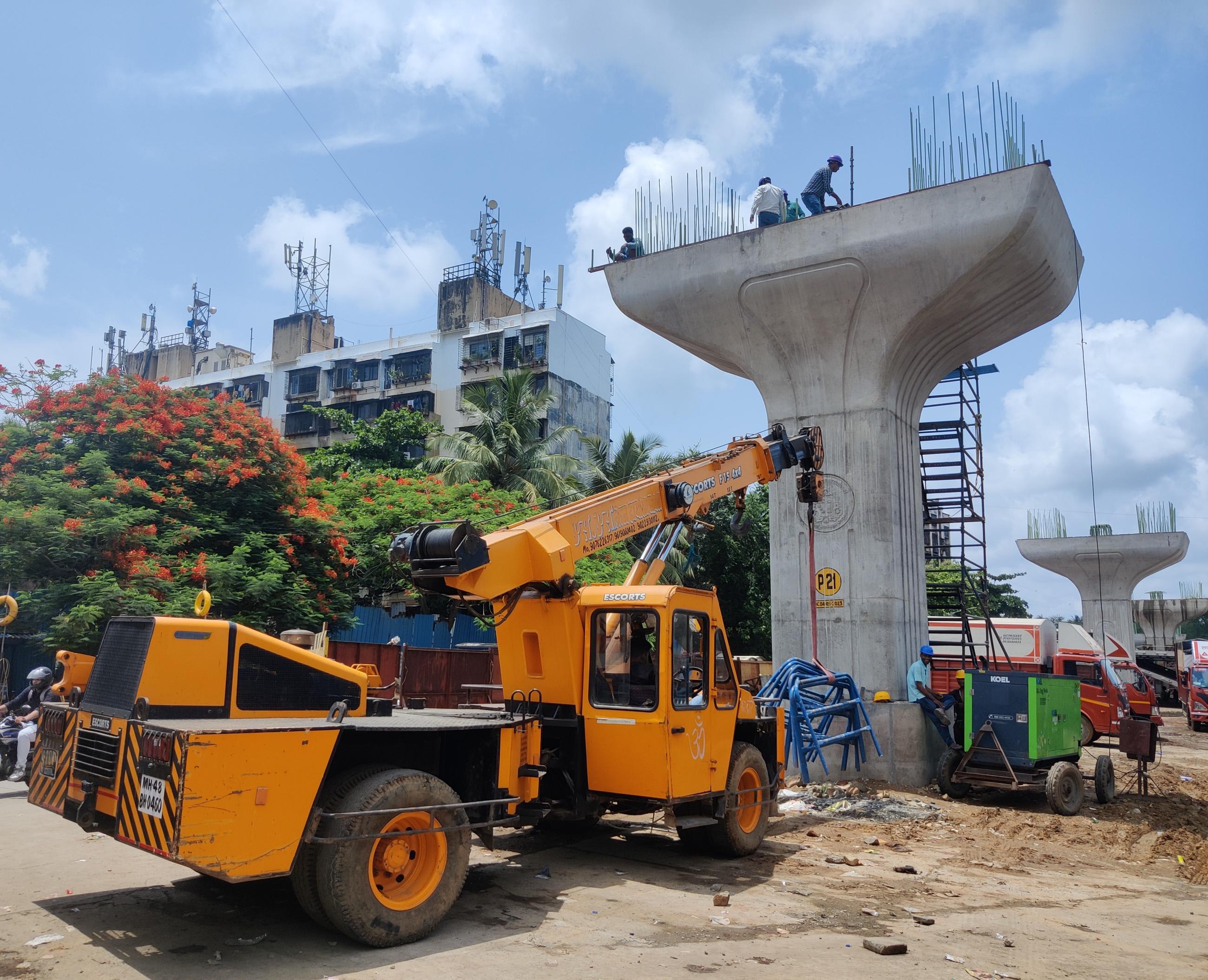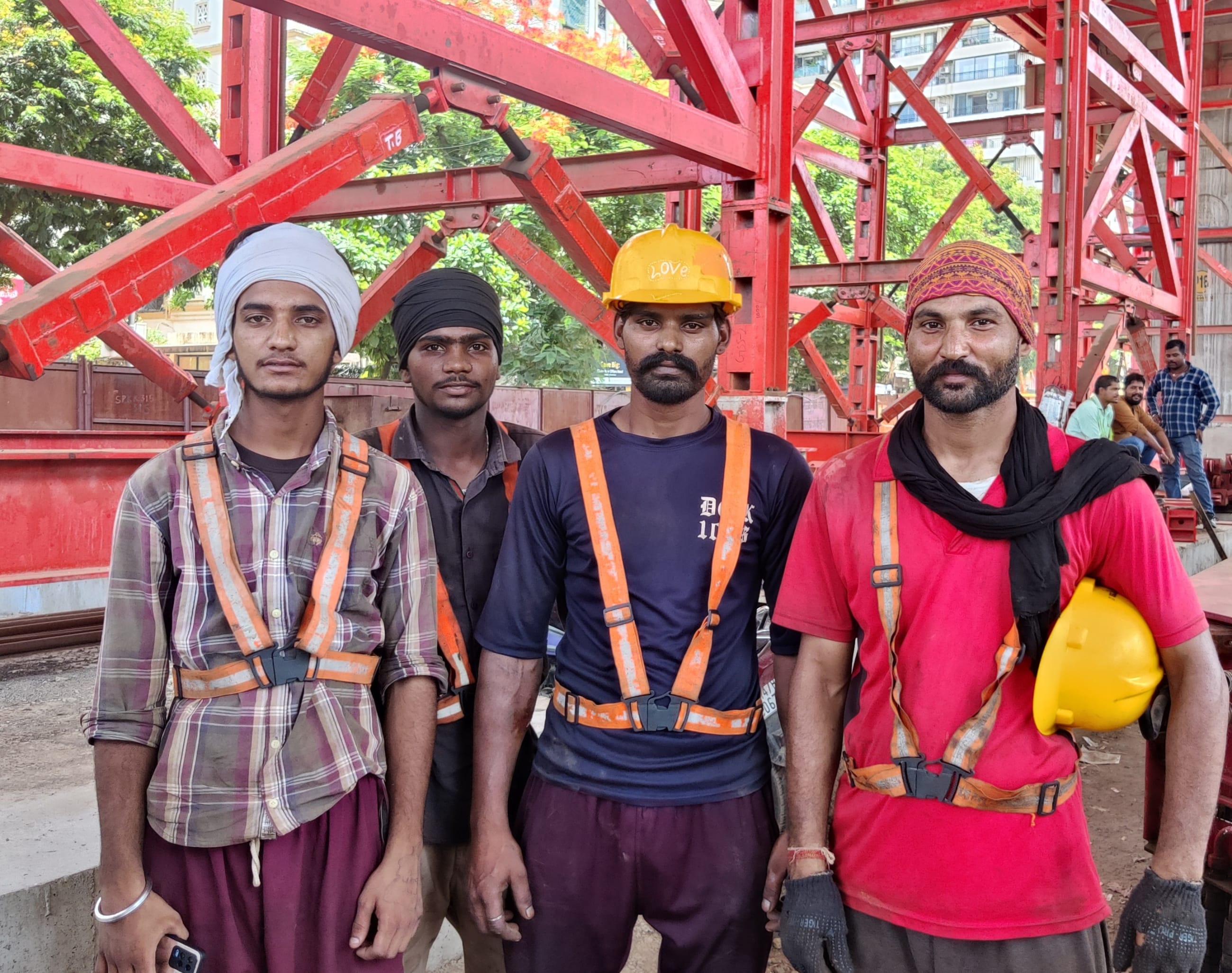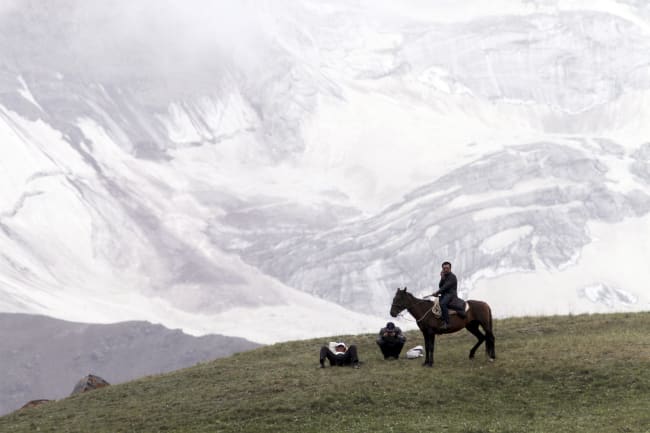Rajkumar Rao's job as a delivery worker entails unloading a 66-pound cylinder from a truck, mounting it on his back, and delivering it to homes across Mumbai. To distribute the cylinders of inflammable gas commonly used for cooking in Indian homes, Rao, who is 28 years old, climbs several floors in buildings devoid of elevators and walks long distances to those in narrow lanes. On a usual day, he tries to make at least 30 such deliveries, which, at 20 rupees ($0.24) per cylinder, earn him 600 rupees, or $7.20. The job involves intense physical labor—and, with India experiencing its longest heat wave ever, it has been especially challenging this summer.
"In early June, Kishore, one of the delivery workers, collapsed suddenly while on the job," says Rao. "We rushed him to a hospital, and the doctor said he had suffered a heat stroke, which had led to a cardiac arrest. The man is alive, but he's old, around 50, and now, he has to pay medical bills he cannot afford."
This year, India has experienced one of its longest and deadliest summers, with temperatures crossing 50°C (122°F) in some parts of the country. The record-breaking heat wave started early, was more widespread, and lasted longer. According to news reports, it killed more than 200 people and left tens of thousands ill, although official data from the Indian government pegs the number of heat-related casualties this year at 143. Climate change has made the incidence of early heat waves 30 times more likely in India, and the World Bank estimates that India could soon become one of the first places on the planet that heat waves break the human survivability limit.
However, despite the mounting threat, heat waves are still not recognized as a notified disaster in the country, and the country lacks protections for outdoor workers.
Extreme heat, exacerbated by climate change, has been costing lives worldwide. However, its impact is especially pronounced on laborers, whose work exposes them to extreme heat stress. A recent report from the International Labor Organization (ILO) reveals that 2.41 billion workers are exposed to such excessive heat worldwide, of whom nearly 19,000 succumb annually. The health impacts of this exposure are many, the ILO says—from heat stroke and exhaustion to heat rashes and physical injury to cardiovascular and kidney disease.
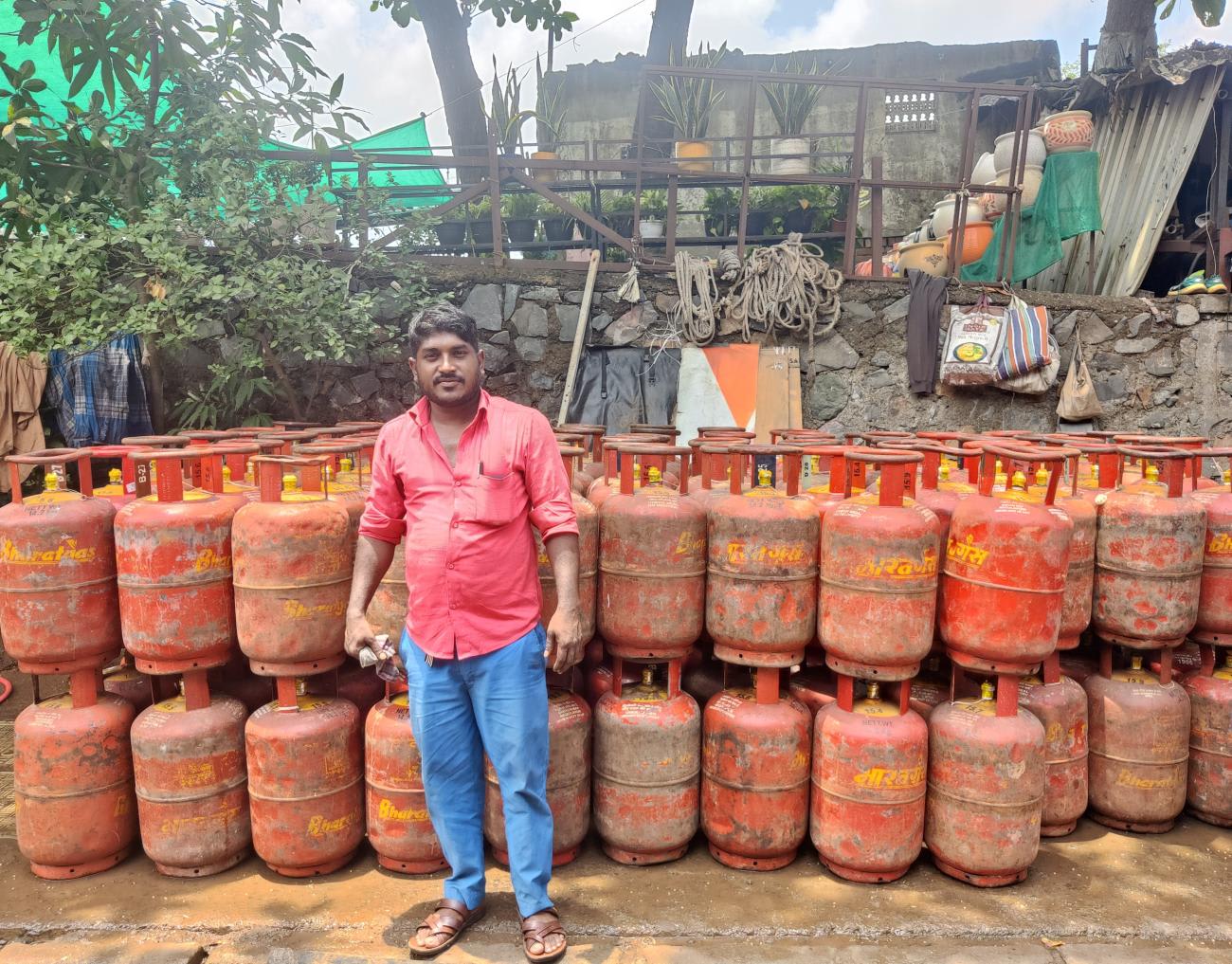
In India, up to 75% of the workforce, or 380 million people, depend on heat-exposed labor. In May, a laborer died due to extreme heat in the north Indian state of Rajasthan while loading stones in a tractor trolley. Another, a worker at an under-construction refinery, perished a few days before him; earlier, a 25-year-old laborer succumbed to a heat stroke in the southern Indian city of Chennai.
Milind Ranade, general secretary of the Kachra Vahatuk Shramik Sangh, a Mumbai-based not-for-profit that works on labor issues, says that several laborers die or fall ill due to extreme heat in India every year, but, given little economic agency and state support, they continue to work, even if it means risking their lives.
"The troubles they face due to extreme heat are financial and physical as well as mental. But if they don't work, what will they eat?" says Ranade. "Their employers don't care about them, nor does the government. Even their deaths [caused due to extreme heat] are grossly underreported."
The Impact of Extreme Heat
Altaf Khan, a 35-year-old rag picker in Mumbai, makes his living by sifting through mounds of garbage, finding discarded bottles that he can sell to recycling units. On a good day, he makes 800 rupees ($9.58), working for about 10 hours a day. Every time he collects enough sellable trash, he stuffs it in a gunnysack, loads it onto his back, and walks to the buyer, a few kilometers away. This summer, however, Khan hasn't been able to work full days because the excessive heat has been eating into his time.
"There have been days when the heat makes me feel dizzy, like I'm going to collapse. Then, I just lie down under a tree, and ask some passersby for water. There's also a [charity] nearby that gives free food. Once I feel better, I go there, eat something, and start work again," he says.
Extreme heat affects the bodies of outdoor laborers in several ways, causing heavy sweating, dry throat, intense thirst, spasms and cramps in the legs, and skin irritation, as revealed in a recent survey conducted by the Work Fair and Free Foundation, a research institution focused on India's informal workforce. Geeta Thatra, an associate director with the organization, tells Think Global Health that, despite the harsh conditions, laborers continue to work given the stagnating wages and scarce employment opportunities in India.
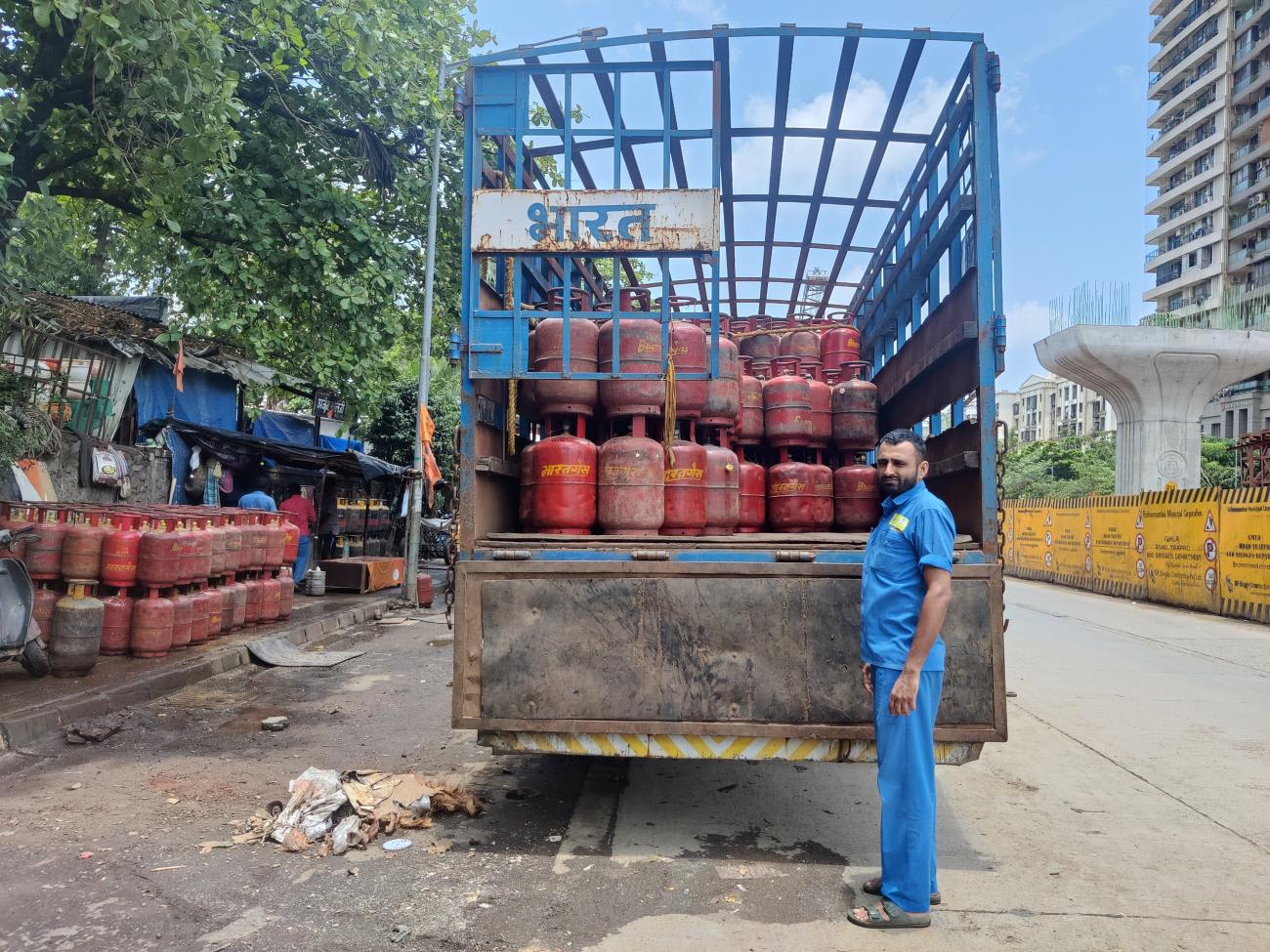
The impact of extreme heat on India's outdoor workers is obvious, Thatra says, but heat waves are also harsh on those who work indoors. She cites the example of workers employed in metal processing units, which do not have basic facilities such as ventilation despite the large amount of smoke that the melting metals produce.
"These are generally hotter work environments, and now, with the rising temperature outside, these places are becoming hotter inside—and none of these worksites have cooling mechanisms," says Thatra, "Only recently, I met a laborer who suffered burns on his body because a few drops of his sweat fell into the molten metal. The metal strung out of the foundry, leading to burns on his body. He barely managed to save his eyes."
Thatra adds that despite the extreme heat stress and its consequences, India's laborers receive no organizational or state support. Lalpreet Singh, a 24-year-old construction worker in Mumbai, agrees, saying, "We work during the afternoons also, from 8 a.m. to 8 p.m., with an hour-long break in the afternoon for lunch. If the heat gets to us, there is no other respite but to drink some water."
The Need for Policy Interventions
India's labor laws have no provisions to protect workers from extreme heat, says Vipul Pandya, general secretary of the Bandhkam Mazdoor Sangathan, a trade union that represents more than 25,000 construction workers in the city of Ahmedabad.
As temperatures crossed 45°C in Ahmedabad this summer, Pandya says he inspected a few worksites in the city and discovered that several did not have places to rest, washroom facilities, or even water for the laborers. At one under-construction site, he found that the parched workers were drinking the water they used for mixing raw material. He approached state authorities, who in turn pointed him to an advisory they had issued to protect workers during heat waves. However, Pandya says that this notification is not actionable because it isn't a part of the rules.
Our labor laws must be amended to reflect the evolving threat of climate change, especially the vulnerability of laborers to excessive heat
Vipul Pandya
"There is no legal provision on the kind of protection workers should get during heat waves," says Pandya, who has been working with laborers for the past 30 years. "Our labor laws must be amended to reflect the evolving threat of climate change, especially the vulnerability of laborers to excessive heat. This heat is only going to get worse in the coming years."
Given the challenges faced by the majority of India's workforce, policies need to prioritize both immediate and long-term strategies, says Anjal Prakash, research director of the not-for-profit think tank, Bharti Institute of Public Policy. He recommends regulations mandating adequate shade, hydration breaks, and cooling stations at worksites—in addition to social security measures such as health insurance and financial support for workers. He also states that workers should be educated about heat-related health risks and safety practices—and that urban planning should focus on increasing green spaces and adopting heat-resistant infrastructure.
"By integrating these multifaceted approaches, we can better protect the labor force, contributing to both their well-being and the sustained growth of the economy," says Prakash.
However, until India heat-proofs its workforce, laborers will be foreced to confront the challenges of climate change. Sahma Sheikh, a 32-year-old, who loads and unloads bricks for a living, says that the extreme weather does not deter him.
"If the heat makes me dizzy, I drink some water. If that doesn't help, I sit down in the shade for a few minutes. But I don't stop working," he says, "I have a family depending on me, young children and old parents to feed."
